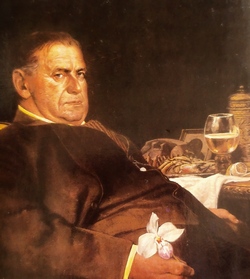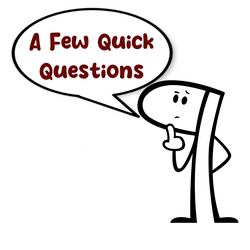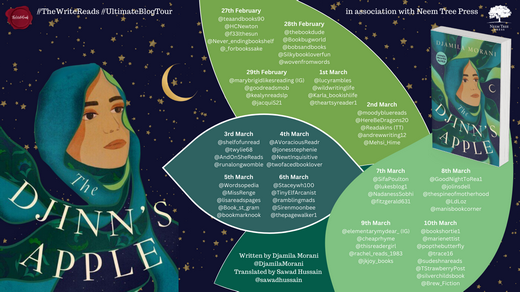I can’t tell you when this became a (largely) annual thing for me to post, but it was on a blog that pre-existed this one. As always, seems like a good day to post it.
Category: Mystery/Detective Fiction/Crime Fiction/Thriller Page 1 of 138
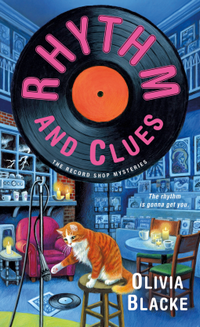 Rhythm and Clues
Rhythm and Clues
DETAILS: Series: The Record Shop Mysteries, #3 Publisher: St. Martin's Press Publication Date: March 26, 2024 Format: eARC Length: 304 pgs. Read Date: March 8-11, 2024

What’s Rhythm and Clues About?
An old college acquaintance of Juni Jessup has approached her and her sisters with a proposition—he and his partner will invest in Sip & Spin Records, help it succeed—and take a good portion of the profits. Juni and her old (and maybe future) boyfriend, Beau, attend a hockey game with them for a little wining and dining (or beering and snacking) along with the pitch. It’s not the beginning of a Record Shop Mystery that you’d expect, but it’s pretty fun.
The fun goes away later that night when a monster storm hits their area, knocking out power to the entire town, and threatening to flood buildings as well. Juni and her older sister dash to their store to try to mitigate the damage there. Before you know it, the event readers were waiting for happens—one of the investors is dead outside their shop and Juni is the one who discovers the body.
The police warn her off—but the surviving partner has heard of Juni’s previous adventures and asks for her help. Which is convenient—because she wanted to look into the murder anyway.
The storm has made leaving—or entering—Cedar River impossible for a few days, so the murderer is definitely still around. This could be a problem because it seems that everywhere Juni looks, she finds another suspect with plenty of reasons to want that investor gone. Will she be able to find them before they can get out of town?
The Investors
For various and sundry reasons (starting with all the roads being washed out), Juni ends up spending a lot of time with the dead man’s business partner and gets to know their business practices much better than she did during their pitch to Juni (or her sisters).
While they don’t do anything illegal, and probably not strictly unethical either, there’s something about their methods that just don’t sit right with me (or several others in the novel). As a mystery reader, we get to encounter all sorts of unsavory characters and actions that aren’t necessarily illegal, but sure aren’t good. Very often you wonder how realistic they are while hoping some fiendish writer made it all up out of whole cloth (but secretly knowing they didn’t). I suspect that Blacke is sharing something that came up in her research—or something that people she knows have run into for their own small business.
I truly hope the latter isn’t the case, because I’m sure people like this exist and people suffer because of them. It makes me glad to not own a business and have to worry about it.
Juni’s Growth
She’s been on her own for several years, and until an economic hit at her company led to her coming home, seems to have found some sort of success in life. So you’d think she’d come back to town as an adult—and she does, but she also seems to be largely treated as pretty much the same kid she’s always been. And maybe part of that is just coming back to the place where everyone knows you as that kid you were when you went to college and aren’t ready to accept that you’ve grown up.
But she’s been coming into her own, little by little, over the course of the series—and arguably arrives in this book. Maybe she’s just more comfortable in her own skin and her old hometown. Maybe it’s the way others see her. Probably a little bit of both. It certainly doesn’t hurt things at all the way she keeps finding herself in the middle of murder cases.
The important thing is that it’d be easy for Blacke to freeze all the characters so that they’re who we met in Vinyl Resting Place for the rest of the series. But she doesn’t do that—Juni’s the most notable example of this, but there are others, too. I’m so glad that Blacke has taken this path, it opens the door up for more changes, more development—and will keep readers like me engaged with the characters and the stories they find themselves in.
In my post about the last book, I said, “I do worry that at some point the residents of Cedar River are going to decide that Juni’s the Angel of Death having brought so many murders to town with her.” They still might do that—but so far, they’ve gone in another direction. Particularly the first responders in town. There’s a moment involving them and Juni that got me to laugh out loud. And I don’t know how to say more about it than that.
Juni’s Drinks
Blacke’s music pun-inspired coffee drink names are as good here as they’ve ever been, if not better. Now, I understand why she doesn’t give us too many per novel. But I think she could give her fans some supplemental material—bonus tracks, if you will—just give us some of the seasonal menus from the time between books. Just throwing that out there as an idea.
That Moment
When it comes to a lot of procedurals or other mystery shows on TV there’s a moment where the detective sees something or hears something that a friend/coworker says, they get this look in their eye and they dash out of the room, they’ve got the whole thing solved now. Gregory House was great at these—Temperance Brennan is the other prime example that jumps to mind (but I know there are many others).
It’s hard to depict those moments in novels, however. But you can still see them happening—Juni has one of those here. Well, she starts to anyway, and something comes along to take her out of the moment. For most/all readers, we won’t get taken out of the moment—if anything, we’ll keep going with it and solve the mystery (or at least get a lot closer to it). Blacke really handled that well—a trick I wish she’d teach others.
While commending her for this, her creation got on my nerves because of it. Juni took forever to circle back to that breakthrough moment and finish her thought. I was so relieved when it happened without me having to climb into the book and shake her by her shoulders until she’d focus.
So, what did I think about Rhythm and Clues?
Blacke is really onto something with these books—this is her best yet, and she shows no signs of slowing down (I hope she gets to keep going). The writing was sharp here, the characterizations—particularly of the investors, and the new people Juni encounters during the case—were on point and vivid, the mystery was her best and twistiest yet. The herrings were a bright and lively red—practically vermillion. The resolution was so, so gratifying.
This series is quickly becoming a solid favorite of mine—I’m never going to be a giant cozy mystery fan, but when I read one that works as well as this one does, I want to go find more. It’s a very clever and fast read, with some heartfelt emotional moments and it brings a lot of smiles to my face.
I honestly don’t know of a better way to put it or a better reason to commend it to your attention. Rhythm and Clues was as satisfying a read as you’re going to find. You can jump on here or you can get the first two books in the series and have a good time with them first. Either way, I encourage you to track it down.
Disclaimer: I received a copy of this book from St. Martin’s Press via NetGalley—thanks to both for this.

This post contains an affiliate link. If you purchase from it, I will get a small commission at no additional cost to you. As always, the opinions expressed are my own.
![]()
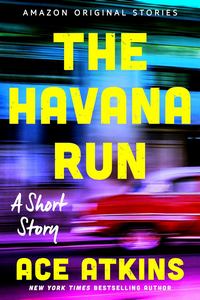 The Havana Run
The Havana Run
by Ace Atkins
DETAILS: Publisher: Amazon Original Stories Publication Date: March 12, 2024 Format: eBook Length: 47 pg. Read Date: March 18, 2024

What’s The Havana Run About?
George and Jay are a couple of out-of-work newspapermen who spend more time than they ought drinking (but what else are they going to do?). They meet an elderly Cuban immigrant who wants to hire them to go to retrieve some items for him—it’s not safe for him to return, but there should be no problem with them going.
He doesn’t tell them what they’re going for, assuring them that some of his friends will guide them.
What do they have to lose? They have 10K to gain. Once they get to Havana, the very sketchy plan they have evaporates. The pair finds themselves running from criminals and the police, and unable to trust anyone. Including (especially?) their contact.
So, what did I think about The Havana Run?
Ummm…now that’s a good question. I guess I’d have to say, not much. I liked the two protagonists and enjoyed their interactions with each other and just about everyone they encountered. The action scenes were good, too, as one would expect.
But…I didn’t connect with anything else in this book. I didn’t buy their “mission” (or whatever you want to call it), and couldn’t believe that they went for it—even as desperate for money as they seemed to be. And then everything that happened once they get to Cuba? It was all…I don’t know what to say. Pointless? Disappointing? (there are other, better words, I’m sure, but I’m drawing a blank)
I fully expect there are plenty of people who will have enjoyed this and are glad they read it. I just don’t see why they would. I don’t get what Atkins was trying to do (other than something other than Spenser or Quinn Colson)

This post contains an affiliate link. If you purchase from it, I will get a small commission at no additional cost to you. As always, the opinions expressed are my own.
![]()
 Rhythm and Clues
Rhythm and Clues
DETAILS: Series: The Record Shop Mysteries, #3 Publisher: St. Martin's Press Publication Date: March 26, 2024 Format: eARC Length: 304 pgs. Read Date: March 8-11, 2024

What’s Rhythm and Clues About?
An old college acquaintance of Juni Jessup has approached her and her sisters with a proposition—he and his partner will invest in Sip & Spin Records, help it succeed—and take a good portion of the profits. Juni and her old (and maybe future) boyfriend, Beau, attend a hockey game with them for a little wining and dining (or beering and snacking) along with the pitch. It’s not the beginning of a Record Shop Mystery that you’d expect, but it’s pretty fun.
The fun goes away later that night when a monster storm hits their area, knocking out power to the entire town, and threatening to flood buildings as well. Juni and her older sister dash to their store to try to mitigate the damage there. Before you know it, the event readers were waiting for happens—one of the investors is dead outside their shop and Juni is the one who discovers the body.
The police warn her off—but the surviving partner has heard of Juni’s previous adventures and asks for her help. Which is convenient—because she wanted to look into the murder anyway.
The storm has made leaving—or entering—Cedar River impossible for a few days, so the murderer is definitely still around. This could be a problem because it seems that everywhere Juni looks, she finds another suspect with plenty of reasons to want that investor gone. Will she be able to find them before they can get out of town?
The Investors
For various and sundry reasons (starting with all the roads being washed out), Juni ends up spending a lot of time with the dead man’s business partner and gets to know their business practices much better than she did during their pitch to Juni (or her sisters).
While they don’t do anything illegal, and probably not strictly unethical either, there’s something about their methods that just don’t sit right with me (or several others in the novel). As a mystery reader, we get to encounter all sorts of unsavory characters and actions that aren’t necessarily illegal, but sure aren’t good. Very often you wonder how realistic they are while hoping some fiendish writer made it all up out of whole cloth (but secretly knowing they didn’t). I suspect that Blacke is sharing something that came up in her research—or something that people she knows have run into for their own small business.
I truly hope the latter isn’t the case, because I’m sure people like this exist and people suffer because of them. It makes me glad to not own a business and have to worry about it.
Juni’s Growth
She’s been on her own for several years, and until an economic hit at her company led to her coming home, seems to have found some sort of success in life. So you’d think she’d come back to town as an adult—and she does, but she also seems to be largely treated as pretty much the same kid she’s always been. And maybe part of that is just coming back to the place where everyone knows you as that kid you were when you went to college and aren’t ready to accept that you’ve grown up.
But she’s been coming into her own, little by little, over the course of the series—and arguably arrives in this book. Maybe she’s just more comfortable in her own skin and her old hometown. Maybe it’s the way others see her. Probably a little bit of both. It certainly doesn’t hurt things at all the way she keeps finding herself in the middle of murder cases.
The important thing is that it’d be easy for Blacke to freeze all the characters so that they’re who we met in Vinyl Resting Place for the rest of the series. But she doesn’t do that—Juni’s the most notable example of this, but there are others, too. I’m so glad that Blacke has taken this path, it opens the door up for more changes, more development—and will keep readers like me engaged with the characters and the stories they find themselves in.
In my post about the last book, I said, “I do worry that at some point the residents of Cedar River are going to decide that Juni’s the Angel of Death having brought so many murders to town with her.” They still might do that—but so far, they’ve gone in another direction. Particularly the first responders in town. There’s a moment involving them and Juni that got me to laugh out loud. And I don’t know how to say more about it than that.
Juni’s Drinks
Blacke’s music pun-inspired coffee drink names are as good here as they’ve ever been, if not better. Now, I understand why she doesn’t give us too many per novel. But I think she could give her fans some supplemental material—bonus tracks, if you will—just give us some of the seasonal menus from the time between books. Just throwing that out there as an idea.
That Moment
When it comes to a lot of procedurals or other mystery shows on TV there’s a moment where the detective sees something or hears something that a friend/coworker says, they get this look in their eye and they dash out of the room, they’ve got the whole thing solved now. Gregory House was great at these—Temperance Brennan is the other prime example that jumps to mind (but I know there are many others).
It’s hard to depict those moments in novels, however. But you can still see them happening—Juni has one of those here. Well, she starts to anyway, and something comes along to take her out of the moment. For most/all readers, we won’t get taken out of the moment—if anything, we’ll keep going with it and solve the mystery (or at least get a lot closer to it). Blacke really handled that well—a trick I wish she’d teach others.
While commending her for this, her creation got on my nerves because of it. Juni took forever to circle back to that breakthrough moment and finish her thought. I was so relieved when it happened without me having to climb into the book and shake her by her shoulders until she’d focus.
So, what did I think about Rhythm and Clues?
Blacke is really onto something with these books—this is her best yet, and she shows no signs of slowing down (I hope she gets to keep going). The writing was sharp here, the characterizations—particularly of the investors, and the new people Juni encounters during the case—were on point and vivid, the mystery was her best and twistiest yet. The herrings were a bright and lively red—practically vermillion. The resolution was so, so gratifying.
This series is quickly becoming a solid favorite of mine—I’m never going to be a giant cozy mystery fan, but when I read one that works as well as this one does, I want to go find more. It’s a very clever and fast read, with some heartfelt emotional moments and it brings a lot of smiles to my face.
I honestly don’t know of a better way to put it or a better reason to commend it to your attention. Rhythm and Clues was as satisfying a read as you’re going to find. You can jump on here or you can get the first two books in the series and have a good time with them first. Either way, I encourage you to track it down.
Disclaimer: I received a copy of this book from St. Martin’s Press via NetGalley—thanks to both for this.

This post contains an affiliate link. If you purchase from it, I will get a small commission at no additional cost to you. As always, the opinions expressed are my own.
![]()
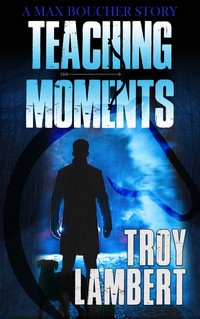 Teaching Moments
Teaching Moments
https://troylambertwrites.com/the-max-boucher-series/)
DETAILS: Series: Max Boucher Mysteries, #2 Publisher: Unbound Media Publication Date: January 18, 2022 Format: Paperback Length: 368 Read Date: August 24-26, 2023

What’s Teaching Moments About?
It seems that after the events of Harvested, Max Boucher has developed a specialty when it comes to his PI work—animals. Granted, most of these are pretty small cases without a lot of excitement, but work is work, right? And if he’s getting the bills paid, he can spend more time thinking about the new evidence he found at his old home at the end of Harvested.
But that’s for another time, really. Max has been hired to leave Seattle and come to Cedar Peak—a small town in Idaho*, where someone from out of town sticks out like a sore thumb. He’s been called upon to investigate a missing—presumed stolen—horse, worth a pretty penny.
* I kept changing my mind about what city it’s based on, and decided to stop trying because it really doesn’t matter.
But before he can even start this investigation, he stumbles across a murder. Now, that’s not why he’s in town, but he sort of befriends the woman dating the dead man (who turns out to be related to the horse’s owner). He’s warned off by the local police, but he ends up looking into the murder, too.
It’s not long at all before Max discovers that almost nothing is what it seems and that he might have bitten off more than he can chew this time.
The Other POV
Interwoven with Max’s story is the first-person account of a young woman becoming a serial killer. On the one hand it’s easy to see why we get this (her weapon of choice is used in the murder)—but it frequently feels like it could be a different book.
Actually, you could excise these chapters (or at least almost all of them) and publish it as a stand-alone novella. You’d probably need a different conclusion to make it satisfactory—but it’d work that w
This isn’t entirely a criticism (although it does feel a little out of place from time to time)—the way this story ends up merging with the rest of the novel really works and adds to the overall impact of the novel.
The only real complaint I have about it is that all these chapters are in italics, and it just bugs me to read that much italicized material, there’s gotta be a better way to set that kind of thing off from the rest of the text.
The Series Arc
After the way that Harvested ended (and well, the way that most of that book went), I assumed we’d get a lot more time and space devoted to the murder of Max’s daughter and the disappearance of his wife in this book. I didn’t expect that he’d solve everything so soon, but still.
And while Max (and/or Lambert) didn’t blow off the topic, the novel didn’t focus on it as much as I’d assumed. I think it’s good for the long-term health of the series, as long as Lambert doesn’t drag things out in this regard. The closing pages of this novel bring in a new twist to the series that can help out with the overall arc(s), too.
So, what did I think about Teaching Moments?
It feels pretty uncharacteristic of me not to mention Max’s dog so far. Russ is one of those rescued at the end of Harvested and he’s become an important part of Max’s life. He’s a very good boy, and a canine I’m pleased to make the acquaintance of.
I don’t think I was as surprised at a lot of the serial killer story as the novel wanted me to be. That may be because I read too many things in this genre. It was well-executed and I don’t have any noteworthy negative things to say about it beyond I thought it wasn’t that unexpected. I don’t need to be shocked, I just want a good story, and that’s what Lambert delivered.
A solid PI novel is one of my favorite things in the world. Lambert’s Max Boucher novels are good examples of the genre. Yes, the setting and the central crime might not be common for the genre, but they work well in Lambert’s hands. I’m definitely looking forward to more of these, and recommend them to you. Even if you’re not looking for a series, Teaching Moments could work as a standalone. Either way, you should give this a shot.

This post contains an affiliate link. If you purchase from it, I will get a small commission at no additional cost to you. As always, the opinions expressed are my own.
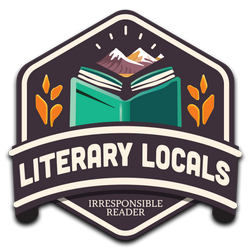
I flipped a coin late last night and it came up “stop writing and get some sleep.” It was frustrating that I got to that point, it’s even more so that I had to walk away from a post that was coming along pretty nicely. Hopefully I can finish it tonight, so you can read it tomorrow. In the meantime, here’s a look back at the first Max Boucher book in lieu of something about the second.
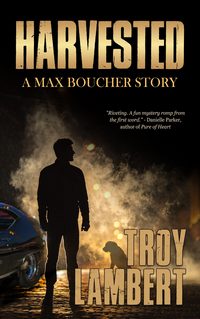 Harvested
Harvested
by Troy Lambert
DETAILS: Series: Max Boucher Mysteries, #1 Publisher: Unbound Media Publication Date: March 15, 2019 Format: Paperback Length: 247 pg. Read Date: January 2-3, 2023

What’s Harvested About?
Max Boucher is a P.I. in Seattle. Like a good (fictional) P.I., he spends a lot of time drinking. He spends most of the rest of his time working just to make ends meet. He really wants to devote his time to looking for whoever murdered his daughter, killed his dog, and either kidnapped or murdered his wife. He—and his former colleagues in the Seattle PD—have followed every lead they have, but he’d spend all of his life going back over the evidence time and time again if he could.
Now, he’s taken on a case—he takes on every case that comes his way—that takes him back to his old neighborhood. The dog park that he and his family used to go to, in fact. There’s a rash of dognappings in the area, and owners have come together to hire him to find their canine friends. The police can/will only do so much, but Max can devote more time to it.
It doesn’t take long for things to get hairy—there’s a connection to a Korean mob boss. Some of the dogs start reappearing—with strange injuries. And it turns out that this has been happening all over Seattle for some time. Max isn’t sure what he’s gotten himself into, but it’s about a lot more than missing poodles.
Supporting Characters
Obviously, you’ve got to have a compelling P.I. in a book like this—and a good hook for the story. That’s what the reader comes for, and the writer had better deliver. A plausible villain, is important, too—but the others can overcome an iffy one. But what will really make a P.I. novel work is the supporting characters—the cop buddies/frenemies/rival (depending on the series), the client, the witnesses, and so on.
Lambert nails this throughout the book. I like Boucher and want to see more of him, but I enjoyed some of the side characters more than him. There’s a friendly and helpful veterinarian who could probably carry a cozy mystery series on her own—and I would buy six of those tomorrow if they existed.
There’s a guy who details Max’s car (he’s got an older car that’s his pride and joy)—which is something definitely called upon when your case involves carrying injured dogs (and injured detectives) around. If Eddie shows up for a scene or two in every book in the series, you can color me pleased. I’m not even sure why—I also don’t care much, I just liked him.
I’m not going to say I enjoyed the Korean mob boss* in the same way I did those two. But the scenes with him are some of the most intense in the novel.
* Ahem. Suspected boss, of a mob that may not even exist.
I could go on for a few more—I don’t remember exactly my point when I started this section, other than to rave about Dr. Gamble and Eddie. But I guess that I just want to stress that Lambert gives us more than a solid P.I. He knows how to give the reader characters to invest in and care about—even if only for a page or two.
Beware of (Hurt) Dogs
* (yeah, that’s a lame section title—but it’s better than “It’s a Dog Eat Dog Book” with the implied cannibalism)
I know I have readers who will be antsy about this book—we’re talking about kidnapped and injured dogs here (there’s a reason I have a recurring post about books about dogs who live). And for those who cannot take violence toward animals, this is a book to avoid.
I will say, however, almost all of the violence happens “off-screen”—you see very little of it on the page. And what you see on the page isn’t that bad (up until the climactic bit at the end, but the violence there is spread amongst characters with two and four legs (and the two-legged ones get the worst of it).
The point of this book is Boucher investigating the kidnappings, stopping them by getting to the bottom of things and rescuing as many dogs as he can. So if you’re on the fence, you can hold on to that.
So, what did I think about Harvested?
This was a good read. Lambert delivered in every way I wanted a book like this to—solid plot, unique case, great character work, and a pace that keeps you turning the pages long past the time you should put the book down for sleep or chores. I’d recommend this just for the (relative) novelty of a Seattle P.I.—mid-sized US cities need to be the setting of more P.I. novels. The book delivers on everything it promises and gives you an open (and welcome) invitation to come back for another. I know I’m accepting that invitation.
Oh—minor spoiler—by the end, one of the kidnapped dogs can’t be matched with an owner and ends up staying with Max. So you know I have to come back, just for more of him.
I’d have come back anyway—I want to see how Max moves on from this point in general. I’m quite curious about the clues he discovered regarding his wife’s case, too. I’m assuming (and really don’t want to know the truth until I’m into the next book) that book 2 will advance the investigation into his wife’s kidnapping while Max and his new partner dive into another stand-alone case—and we’ll continue that way for a while. That sounds like a great time to me. Grab this one—the second book is out now, you might as well grab it, too. You’ll have fun.

This post contains an affiliate link. If you purchase from it, I will get a small commission at no additional cost to you. As always, the opinions expressed are my own.

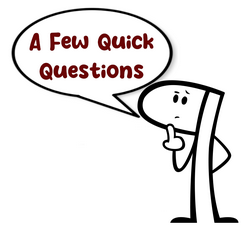
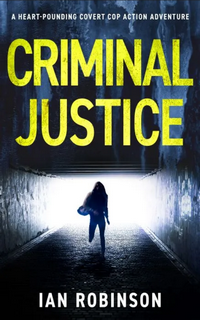 I was very excited this week to see that the good people over at The Good Folks have republished Ian Robinson’s dynamite debut, with a new title and with out a nom de plume. You can go read what I said about Criminal Justice‘s first incarnation back in 2018, here. I wanted to do something to celebrate this release and hopefully draw some eyes to Robinson’s work, so we hastily set up this Q&A. It’s a little different than my usual M.O. (it’s been years since I read the book for one thing, so I couldn’t ask a lot of specifics). I like the results, hopefully you do, too.
I was very excited this week to see that the good people over at The Good Folks have republished Ian Robinson’s dynamite debut, with a new title and with out a nom de plume. You can go read what I said about Criminal Justice‘s first incarnation back in 2018, here. I wanted to do something to celebrate this release and hopefully draw some eyes to Robinson’s work, so we hastily set up this Q&A. It’s a little different than my usual M.O. (it’s been years since I read the book for one thing, so I couldn’t ask a lot of specifics). I like the results, hopefully you do, too.
But first…what is Criminal Justice? (you should check out the publisher’s site for details on getting a copy)
The first book in a totally gripping hard-boiled crime fiction series
Undercover detective Sam Batford is through with police budget cuts and ineffectual superiors. But has he gone rogue?
He is sent to work with a serious crime team in London to take down a big drugs boss. Their chief, DCI Klara Winter, doesn’t appreciate Batford’s presence. The feeling is entirely reciprocal.
Batford has his eyes on the money, except when they are drawn to Stoner, an attractive blonde who is pivotal to the organised crime syndicate’s operations.
Now embroiled in the gang, as Batford plays one side against the other, the risk of his cover being blown increases. This comes to a head when he is faced with the option of confession or torture.
Who will have the last laugh in this high-octane battle of wits?
CRIMINAL JUSTICE is the first book in this riveting series of pulp crime thrillers by Ian Robinson. The second book, STATUS DRIFT, is coming soon.
So, this is not your first time doing a Q&A here, but it’s the first time as Ian Robinson. What brought on the name change? I assume since most of your books are out now (with at least one more on the way) using this name that it’s going to stick?
A pleasure to be invited back on your blog. That’s a reasonable question, and the answer is yes, Ian Robinson is the name I’ll be writing under. I used Ian Patrick (my first and middle name) originally, as I’d just left the police due to ill health. I had a crippling fear of failure, rejection, and self-doubt. I left school at 16 with nothing and figured my books would bomb. Seven books later and, I guess, I proved myself to be wrong.We’re supposed to be talking about Criminal Justice, so let’s focus on that for a bit. The publisher’s blurb is above–but let’s hear it from you—give the reader an elevator pitch for this book, and while we’re it, the Batford series.
I’m terrible at elevator pitches! If you enjoyed the TV series Line of Duty, then these books will appeal. If you like fast-paced thrillers, you won’t be disappointed. I inject some realities of policing within the fiction which gives the narrative a feel of authenticity you won’t get from other books in this genre.What was behind the decision to re-brand this series now? You’ve said that the editing was updated, too—what kinds of (I’m assuming relatively minor) changes have been made to this?
I wanted to reach a new audience and I’ve been impressed with the way The Book Folks operate. They’ve helped me reach new readers with the Nash and Moretti series and getting my stories out there is what it’s about for me. I want people to be entertained. I want the reader to feel that time spent with my work has been of value. The story is the same as the original, but it’s been valuable for me to work with editors to ensure we got the maximum out of the novel in terms of structure and plot. Things have changed since it was first published, particularly with police departments and place names. The editing team were superb in picking these details up.After all this time—and seven published books—what was it like coming back to Criminal Justice? Was it good to be reacquainted, or did you spend a lot of time second-guessing choices you made back then?
Great question. I didn’t second guess anything. I know how good these books are and will stand by them to the grave. I did realise that my mind wasn’t in a great place when I originally wrote the books, but that added to the creativity.You won’t read another crime thriller series like this one. How can I claim that? I used my own policing experience to convey the adrenaline rush on the page. I’ve been in many confrontations, fights, and chases and I can express how this feels from reality. I didn’t read crime fiction either. The realities of the job were enough. This gave me the advantage of putting my own voice on paper. I feel this comes across in a fresh and exciting way and why the BBC optioned the originals for a six-part TV series. The producers could see this too. Sadly, it never progressed beyond the script outline as the pandemic hit the industry and decisions were taken to go in other directions as a result.
I will always be proud of these books, and I wish to acknowledge Chris McVeigh at Fahrenheit Press for supporting me with the originals. Times change, and I have too. I’m embarking on a new chapter in my writing and it feels wonderful to have Batford back with a new brand and to see where it takes him.
The last time we talked about Sam Batford, you mentioned that “writing about a corrupt man goes against all my core values.” Particularly in light of the new look that society is taking at policing in general, and police corruption in particular—is it harder to bring Batford back? Were you tempted to soften him up a bit (last time you said you tried, but it didn’t work) now?
Corruption is, and always will be, an issue for society and isn’t solely within the police. With any public body you’ll have issues of corruption. The beauty of creating a character like Batford is that you can write from a place that disturbs you and that’s where the writing takes on a life of its own. This is where the creative energy takes you to places you thought you’d never want to explore. It can be liberating in terms of story. My Nash and Moretti series is based on investigating murder so this limits how you can approach the writing in some way (to me anyway). With Batford, he is a cop with very few boundaries. He will cross the line, but he does have his own moral code he wouldn’t breach. I can explore the official side through Winter and her team and Batford’s world where anything could happen. Not being constrained in this way is liberating when it comes to the story.According to your publisher, the second book, Status Drift, is coming soon, can you share the new title of the third book yet? More importantly (for me, anyway), does this rebranding open the door for further Batford books? Maybe a prequel?
There’s no confirmed title for book 3 and never say never for more from this character.That’s not the definitive “yes” that I was hoping for, but it’s good enough. 🙂
What is next for Ian Robinson, author, in that case?
To remain grounded and not get hung up on the future. I’m waiting to see what the response is to Criminal Justice then I can decide on a direction to take. I’m hoping Batford will be positively received. I love this character and the scope to expand his world is exciting to me.Thanks for your time, sir! It’s always a pleasure.
Readers—there’s no better time to introduce yourself to Ian Robinson and/or Sam Batford than right now. You won’t soon forget either of them.
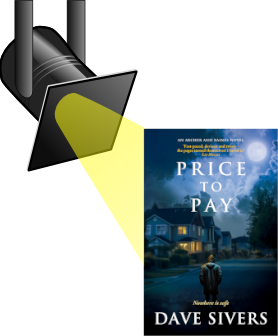
To wish Happy Publication Day to the new Archer and Baines novel, Price to Pay by Dave Sivers, I’ve got this quick spotlight–with a newer blurb than I had for the Cover Reveal to better tempt you.
Book Details:
Book Title: Price to Pay by Dave Sivers
series: Archer and Baines, Book 7
Genre: Police Procedural
Format: eBook
Release Date: February 28, 2024
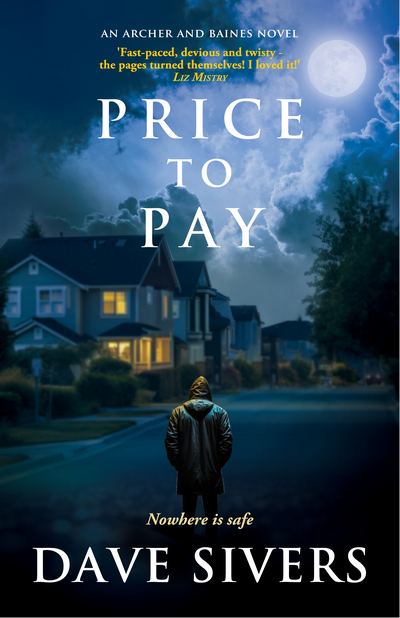
About the Book
‘Fast-paced, devious and twisty – the pages turned themselves! I loved it!’ – Liz Mistry
The more you have, the more you have to lose…
Following an arrest that went wrong, leaving her disfigured and her life in ruins, DCI Lizzie Archer transferred to Buckinghamshire’s Aylesbury Vale, hoping to rebuild her confidence, her career and her life. Eleven years later, she’s happily married, her career is back on track, and she has friends she would trust with her life.
But things can change in a heartbeat.
Meanwhile, her friend and colleague, DI Dan Baines, has worries of his own as the long shadow of the serial killer known as the Invisible Man continues to hang over him. When the chance comes to finally get answers to some troubling questions, he is almost afraid to learn the truth. Because sometimes the reality can be worse than your imagination.
Soon after receiving unsettling threats from local criminals, an old flame makes an unwelcome return to Lizzie’s life. Days later, a grisly murder too close to home plunges her into a nightmare that could cost her everything as suspicion falls on her and her husband, Dominic.
Dan and his team are sidelined from the murder investigation, but they’re not going to let that stop them when a friend is in trouble. And the clock is ticking. Because, if they can’t uncover the truth soon, things will get even worse for Lizzie and Dominic.
Go But the Book Now

My thanks to Overview Media for the invitation to participate in this reveal and the materials they provided.
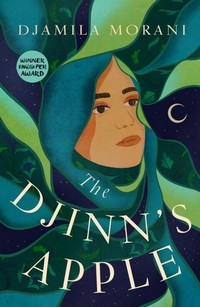
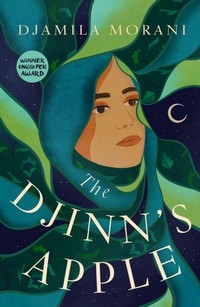 The Djinn’s Apple
The Djinn’s Apple
by Djamila Morani , Sawad Hussain (Translator)
DETAILS: Publisher: Neem Tree Press Publication Date: May 7, 2024 Format: eARC Length: 160 pg. Read Date: February 24, 2023

What’s The Djinn’s Apple About?
Nardeen is a remarkable twelve-year-old. Her father is a physician known for translating medical texts from a variety of languages into Arabic, and Nardeen soaks up his work. She has an astounding memory and ability to understand what she memorizes.
But due to some political intrigue that she doesn’t wholly understand, Nardeen and her family have to flee their home one night. Sadly, she’s the only one who survives.
Nardeen vows revenge on those responsible for her family’s murder—certain that a friend of her father’s is ultimately to blame.
But before then, she finds herself being taken under the wing of a legendary physician and teacher, Muallim Ishaq. He recognizes her gifts and her heritage from her father—he arranges (mostly by the force of his will) to have her learn at The Bimaristan, a hospital of great renown. There, she’s able to hone her skills and knowledge—and sharpen her tools, resolve, and ability to mete out that vengeance.
Father vs. Father
There are a handful of various conflicts in this book (like with any good book), but at the core, this book seems to be a conflict within Nardeen herself. On the one hand, she has her memories of her father and what he taught her—what he showed her by example—about the way to live. She also has to wrestle with what she’s told about her father—by those who profess to have admired him and those who worked against him.
On the other hand, she has her (for all intents and purposes) adoptive father, what he’s trying to teach her—what he shows her by example—about the way to live. She also has to wrestle with what she’s told about him—by those who profess to admire him and those who work against him.
In many ways, these two fathers line up—but in significant ways, they follow and lead her down divergent paths. So much of how the plotlines of this book resolve depends on Nardeen’s acceptance/rejection of what these men stand for.
The Setting
So, this takes place during the “golden age of Baghdad”—Harun al-Rashid’s rule of the Abbasid Caliphate from 786 to 809. Now, everything that I know about this period of time comes from the appendices to this novel “Harun Al-Rashid: The Golden Age of Baghdad” and “The Bimaristan.” As they are appendices, I read them afterward. So I came into this not knowing anything—which is a bit intimidating. And I figure I’m not alone in this (particularly for the intended YA audience, who probably haven’t had much opportunity to study Eigth-Century history).
But honestly? Anyone who reads Fantasy/SFF knows how to approach something like this—sure, this is a representation of actual history, but the same tools and imagination you need to understand Westeros, Panem, or the world of the Shadowhunters equip you to get into this world.
And, like with those worlds, after getting this taste, you’ll likely want to read more about it.
While reading, and since then, I do have to wonder a little bit about how much Morani was stretching things about the opportunities presented to women in this time and place. Not just for Nardeen, either—but all the women she encounters at the Bimaristan (and I’d be saying this if the city was Paris or Rome, not just because it’s Baghdad). But I’m willing to both suspend disbelief for the sake of a good story and to trust that someone who’s as familiar with Arabic literature as Morani is more than my hunches.
So, what did I think about The Djinn’s Apple?
This book hits the ground running—Morani doesn’t give you the opportunity to settle in and get comfortable in this world or anything like that. She thrusts the reader—and poor Nardeen—straight into life-or-death action. Nardeen has a slightly better understanding of what’s going on than the reader does—but not much. This was a great way to start this read—you don’t get the chance to indulge curiosity or get lulled into thinking it’s a different kind of book than it is—you have to rush to catch up and then keep up with Nardeen and only get the luxury of starting to understand the world until she’s (relatively) safe.
There were a couple of times that I wondered about the timelines and how well they worked. I assume I just missed something (and didn’t want to take the time to go back and check). It wasn’t anything that bugged me enough to look into it, but I would’ve appreciated things being a bit clearer.
The characters of Nardeen and Muallim were so well drawn, so vivid, and so compelling that I really wish we had more time with them. Particularly Muallim—this cantankerous genius is the kind of character I really respond to. Now, given the pacing of this book, that’s impossible. And Morani picked the better option for her story. But the eccentric teacher and the stubborn and gifted student is a combination that could’ve made for a lot of fun.
Somehow in the midst of this propulsive pacing, Morani is able to litter the book with some great observations, some drops of wisdom (primarily from the teacher and student), and memorable prose (some of that credit has to be given to Hussain as well).
This is a fast, immersive read that’ll leave you guessing from the beginning right up to the end. You’d be doing yourself a favor if you pick it up.
Disclaimer: I received a copy of this book from Neem Tree Press and The Write Reads via NetGalley.

This post contains an affiliate link. If you purchase from it, I will get a small commission at no additional cost to you. As always, the opinions expressed are my own.
My thanks to The Write Reads for the invitation to participate in this tour and the materials they provided.

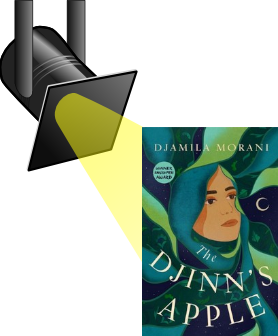
This morning, I’m very pleased to welcome The Write Reads Ultimate Blog Tour for Djamila Morani’s The Djinn’s Apple. In addition to this Spotlight, my post about the book will be coming along soon. In the meantime, go check out https://twitter.com/WriteReadsTours—we’re in the middle of this tour and several bloggers have been writing interesting things about this book and and there are more to come you can find them all there. But for now, let’s learn a little bit about the book, shall we?
Book Details:
Title: The Djinn’s Apple by Djamila Morani, translated by Sawad Hussain
Genre: Historical Fiction / Crime & Mystery / Family
Age Category: Young Adule
Publisher: Neem Tree Press
Release date: February 29, 2024 (UK), May 7, 2024 (US)
Format: Paperback/Ebook
Length: 160 pages
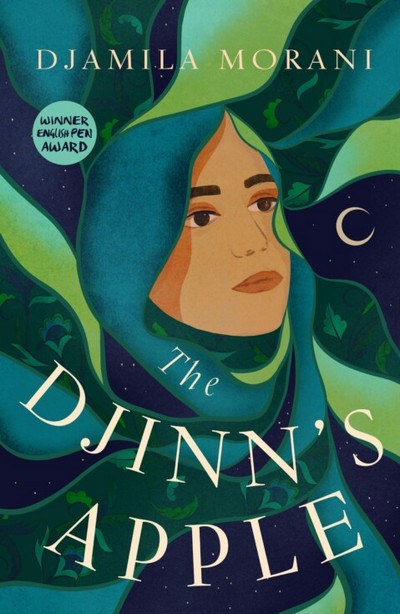
About the Book:
Winner of an English PEN Translates Award.
Historical fiction meets crime fiction in The Djinn’s Apple, an award-winning YA murder mystery set in the Abbasid period—the golden age of Baghdad.
A ruthless murder. A magical herb. A mysterious manuscript.
When Nardeen’s home is stormed by angry men frantically in search of something—or someone—she is the only one who manages to escape. And after the rest of her family is left behind and murdered, Nardeen sets out on an unyielding mission to bring her family’s killers to justice, regardless of the cost…
Full of mystery and mayhem, The Djinn’s Apple is perfect for fans of Arabian Nights, City of Brass, and The Wrath and the Dawn.
Book Links:
Neem Tree Press ~ Amazon UK ~ Amazon US ~ Goodreads

About the Author:
 Djamila Morani is an Algerian novelist and an Arabic language professor. Her first novel, released in 2015 and titled Taj el-Khatiaa, is set in the Abbasid period (like The Djinn’s Apple), but in Kazakh- stan. All of her works are fast-paced historical fiction pieces. She is yet to have a full-length work translated into English.
Djamila Morani is an Algerian novelist and an Arabic language professor. Her first novel, released in 2015 and titled Taj el-Khatiaa, is set in the Abbasid period (like The Djinn’s Apple), but in Kazakh- stan. All of her works are fast-paced historical fiction pieces. She is yet to have a full-length work translated into English.
Author Links:

My thanks to The Write Reads for the invitation to participate in this tour and the materials they provided.



